What to Expect on Your First Cruise
Are you embarking on your first journey at sea? Or maybe you need a refresher? Here are a few tips to make your cruise a smooth one.
Flights. If you aren't cruising from a port close to home, you’ll need to fly to the port of departure. If possible, arrive at least a day early to allow for any delays or flight cancellations. If your schedule doesn't allow it, then you should book the first flight of embarkation day, preferably non-stop, being sure to allow enough time to reach the ship 90 minutes before sailing. Consider booking your same-day flight directly with the cruise line, where they will help you get to the ship (or to the next port) should you be late. Your agent will be happy to arrange flights and pre-cruise hotel stay. If booking your own flights, be sure to book afternoon flights at the end of the cruise to allow time to get off the ship, travel to the airport, and the process of getting through security. Check with your cruise line for recommended flight times for your itinerary.
Pre-Book Shore Excursions, Onboard Shows, Restaurants, and More. While not required, if you have your heart is set on a specific shore excursion, a special meal at a specialty restaurant, or a gotta-have spa treatment, consider reserving it in advance on line. In fact, on some ships, the big production shows may be reservation only, and by booking ahead, you’ll guaranty yourself a seat. You may even save money on some activities and entertainment by pre-booking rather than waiting until you're on board. Wifi minutes, in particular, are generally less expensive to buy in advance than on board. Your agent can help with any advance reservations.
Special Occasion Celebration. Tell your agent if you are celebrating an anniversary, birthday, graduation or other occasion. You may find a special gift or greeting card in your stateroom from the captain, as well as a cake at dinner presented by some enthusiastic waiters.
Cruise Documents. Be sure to complete on-line check-in at the cruise line's website at least a week before sailing. Print your boarding passes, including luggage tags, and bring them with you to the port with your passport/ID required to board. By doing this in advance, you'll save time at the pier and begin your vacation that much sooner. Your luggage tags can be attached to your bags prior to leaving for the cruise port. Your agent will be glad to help with your cruise documents. Just ask!
Do You Need a Passport? A passport is highly recommended and the preferred ID for all travel. However, for U.S. citizens on “closed-loop” cruises (cruises sailing to and from the same U.S. port to destinations in the western hemisphere, a state or city birth certificate with raised seal AND government ID (driver’s license, etc.) are acceptable. Remember, though, that in an emergency situation, where it would become necessary to fly home, a passport would be required, which is why a passport is always better. Non-U.S. citizens should consult their government officials for necessary travel documents. It is the traveler’s responsibility to obtain the necessary documents to travel. For current information on applying for or renewing a passport, please visit the U.S. Department of State, Passport site.
-
Note: Beginning October 1, 2020, every air traveler 18 years of age and older will need a REAL ID-compliantdriver’s license, state-issued enhanced driver’s license, or another acceptable form of ID (i.e. a U.S. valid passport) to fly within the United States. Check for the star. REAL ID-compliant cards are marked with a star at the top of the card. If you’re not sure, contact your state driver’s license agency on how to obtain a REAL ID compliant card.
Getting to the pier. Transfers are available for purchase from the cruise line to get you between the ship and the airport. Depending on the port’s distance from the airport, it may be quicker and cheaper to take a taxi, Uber or Lyft. Your travel agent can help with independent private and shared transfers, as well. Whether you are driving and parking at the pier, or choosing a transfer, porters will be there to take your luggage and see that it arrives safely to your cabin.
Port Check In/Registration Process.
-
Your taxi or transfer will drop you off at the port - be sure to have your passport and boarding pass ready. Crew members will take your luggage, store it on carts, where it will be delivered later to your cabin.
-
You’ll next be directed to security where, much like an airport, bags will be scanned and you will be directed through a metal detector. Note: if you have any orthopedic hardware (knee/hip replacement) pacemaker, or other metal implant, be sure to tell the agent. They will either have you go through a body scanner or direct you through the metal detector for any further body search necessary.
-
You’ll next be given a health form to complete. This form asks if you’ve been ill in the recent past. At this point, you’ll either be directed to a waiting area or directly to the line for registration, where an agent will take your health form, boarding pass, review your passport, take your photo, and issue you your room key (sign and sail pass).
-
Note: Cruise lines are gradually introducing electronic methods of pre-screening in an effort to streamline the boarding process (i.e. Princess Medallion, etc.). This may involve the option of downloading and pre-registering on the cruise line's smartphone, enabling you to simply greet a rep onboard who will simply scan the App's bar code, making boarding a breeze. Read your cruise line FAQ to learn how you will register and board the ship.
-
Lastly, before you actually board, you will be greeted by the photographer, who will ask you and your guest(s) to pose for a fun embarkation photo. This is your first brush with the ship paparazzi, whom you will see throughout your cruise. There is no obligation to have your picture snapped every time and no obligation to purchase any photos, but if you do, photos can be found in the on-board photo studio.
Carry-on Bag. Your luggage may not arrive to your cabin until the end of the day, so it's a good idea to carry on things you’ll need throughout your first day on board. Boarding passes, documents, passport, ID, cash, credit cards, phone, medications and anything of value must always be carried. Never pack these in your luggage. Other useful items are a swimsuit, a change of clothes, toiletries, sunscreen and camera.
Dress Code. Check with your cruise line for suggestions on what to wear on your cruise for your particular itinerary. Generally speaking, casual clothes are the norm at breakfast, lunch and around the ship. Swim attire is acceptable at the pools and spa, and you'll need proper workout wear for the fitness center. Evenings range from casual to smart casual. Most cruises feature a formal night one or two nights each cruise, but the definition of formal means different strokes for different folks. While you'll still see an occasional tux on the guys and a long gown on the ladies, jacket and tie and cocktail dresses are more the norm. Even Holland America has downplayed their description of formal night, now calling it “Gala Night”. On Norwegian Cruise Line, they have done away altogether with formal nights, offering one optional dress up night. Most all cruise lines now offer alternative dining venues for those not wishing to dress up.
-
Alaska and Other Colder Climate Destinations: Weather in Alaska can change by the minute. I can’t stress enough ... dress in layers! It may be freezing in the morning, but 60 degrees and sunny by lunch. Always bring a light-weight weather proof jacket along for rain and mist. Gloves, a hat and scarf come in handy when out on deck in the glaciers. Also, bring binoculars for spotting wildlife!
-
Tropical, Warm Climates: Don't forget bug spray, sunscreen, sunglasses and light rain jacket for popup showers!
-
For more information on packing, see my Packing List.
Beverages Brought on Board. Each cruise line has a policy in place as to what kinds and how much alcohol, soda or water guests are allowed to bring on board. If alcohol is allowed to be carried on, it's usually limited to wine or champagne. Consult with the cruise line or your travel agent to learn what your cruise line will or will not allow. Always hand carry beverages on board, never in your checked luggage. In lieu of buying (or bringing) plastic water bottles, bring along a refillable water bottle. Your purse and the environment will thank you.
Laundry. Most cruise lines offer laundry and dry cleaning services for a price. Suite guests and guests with loyalty rewards may get these services for free; otherwise, expect to pay a fee. Some even offer self-service laundry rooms, as well, with token- or coin-operated (or on luxury lines, free) washers and dryers (and vending machines that dispense small boxes of detergent). For safety reasons, irons are not allowed in staterooms.
Cabin Amenities. Most staterooms are equipped with standard 110-volt AC electrical outlets and hair dryers. Newer ships are also including USB outlets. Either way, bring a travel size power adaptor - rated for cruise ship use - equipped with USB plug-ins, too, since cabin outlets can be limited, and those laptops, iPhones and cameras will surely need charging. Most cruise lines include a mini-safe in every cabin, as well as a mini fridge. While almost all cruise staterooms have flat screen TVs with limited channel selections, some provide movies on demand, as well as a convenient way to check your account on board, view the ship's view on the outdoor cam (especially nice if you’ve got an interior cabin), order room service, shore excursions, and listen to the day’s announcements.
Embarkation Day. Explore the Ship and get organized. Depending on the cruise line and the time you board, you might not be able to access your cabin right away. This would be a good time to grab lunch in the buffet, grab a drink at a bar, take a swim (if you carried on your swimsuit) or explore the ship and learn the lay of the land using the handy deck map you should have received when you boarded. If you didn't prebook shore excursions, spa appointments or restaurant reservations, you might want to do this as soon as you board. Be forewarned that the buffet is a busy place on embarkation day. For a quiet, lighter lunch, look for alternatives - lido deck grill, sandwich cafe, etc. Princess, for instance, has a wonderful International Cafe in the ship's Piazza with sandwiches, salads, quiche, and light fare which is far more peaceful.
Safety Drill. Cruise ship safety drills, or muster drills, are mandatory for crew and passengers, and should be taken seriously. Taking place just before sailaway, the drill provides life-saving information and steps needed in case of an emergency situation. Don't think of skipping it, because crew members will take a head count. Most likely you won't need to bring your lifejacket, but you will need to bring your key card/ID to the drill.
The Daily Newsletter. A newsletter will arrive in your cabin each evening containing all the need-to-know info you'll need for the next day’s activities. In addition, many cruise lines, including Carnival, Norwegian, Royal Caribbean, Disney and Holland America have introduced smartphone Apps that can be conveniently downloaded and accessed for free through the ship's wifi.
Shore Excursions. A list of available shore excursions is typically available at least six months before your scheduled departure; some cruise lines make shore excursions available immediately upon booking, even if the sailing date is further out still. If so, you might want to book your top two to three (if not all of your) shore tour picks in advance (online or by phone) since many popular ones do sell out. Shore excursions can also be booked onboard through the ship's shore excursion desk and, in some cases, via the cabin TV or cruise line App. As an alternative to ship excursions, your travel agent can recommend unique or private tours not offered by the cruise line. Please ask!
Cruise tours vs. going it on your own? The answer largely depends on the port city, and the preference of each passenger. If you want someone else to take care of transportation, meals and making sure you're back on the ship in time, go with one of the cruise line's organized tours. Others find they can save money by making plans directly with independent operators or prefer exploring on their own. Many people will plan a mix of cruise line excursions, private tours and independent wandering.
Keeping in Touch: Phone Service/WiFi.
-
Calling: Most cruise ships are now cell phone friendly; however, satellite service at sea is expensive. Unless you need to make a call while at sea, set your phone in “airplane mode” to avoid any charges for phone or data services appearing on your phone bill when you return home. Check with your cell provider to find out what they offer in terms of discounted international calling, text and data roaming plans.
-
Wifi: Cruise ships also offer wifi packages to purchase for those who can’t live without their laptops and mobile devices while traveling. You can log on in the ship’s internet cafe or your own device. Keep in mind that wifi service on board your ship will be much slower than you’re used to at home, specifically at peak times of day. For lengthy use, it’s best to wait until you’re in port and use free wifi in town or your international calling/data roaming plan you may have purchased from your carrier.
-
Want to completely disconnect while away? Just turn your phone off for the entire trip, lock it in your safe and take it out for emergency use only. Communicate with your travel mates by old-fashioned means - sticky notes on the door, room-to-room calling, and pre-arranged meeting places.
Money Matters. Cruise ships these days operate on cashless systems. The key card or device given to you at check in also serves as your onboard credit card. Even though your meals and onboard entertainment are included, you will most likely incur charges for alcoholic beverages, shore tours, gift shop purchases, spa services, casino specialty dining and other extra services. All of these purchases are made with your key card, charged to your onboard account, which, in turn, is tied to the credit card you provided at check in.
Cash and Currency. Credit cards are accepted most everywhere in port. However, it’s good to have some cash on hand for those times when a credit card just won’t due. Bring along a stack of $1 bills for tipping bag handlers, drivers, room service, etc. If you are visiting foreign ports, it’s a good idea to have a small amount of local currency for purchases from vendors who don’t take credit cards or for tipping local tour guides and taxis. Don't forget some foreign public toilets, particularly in European destinations, have a "pay to pee" policy; be sure to have some Euro coins on hand for this purpose. While your cruise ship will most likely have currency exchange services, the exchange rate will be high. Therefore, it’s best to get foreign money from your local bank or obtain it from an ATM machine in port. Be sure to inform your credit card company of your travel plans to avoid any travel alerts being placed on your card, resulting in denials at the register.
In-Room Safe. Be sure to lock your wallet, cash, credit cards, passport and other valuable items in your cabin safe.
Medical Facilities. Shipboard medical services typically consist of a physician and nurse to take care of minor temporary illnesses and accidents for a fee. If you have a serious illness or injury, you will likely be sent to a land-based hospital and miss the rest of the cruise. Many commonly used medications are kept onboard and can be prescribed by the ship's doctor. However, it's generally cheaper to get over-the-counter medicines in port -- or better yet, bring them with you from home. If you take prescription medicine, it's a good idea to carry copies of your prescriptions with you in case your medicine gets lost or stolen.
Motion sickness. If you think you might be prone to seasickness, bring along a small supply of Bonine or similar motion sickness medication. It will be available on the ship, but will be far less expensive to have your own on hand. Other remedies to consider bringing are patches, Sea-Bands or Ginger.
Dining: When you booked your cruise, you should have selected your preferred method of evening dining: flexible/open seating or traditional assigned seating.
-
Traditional assigned seating means that you have the same table, dining time and dinner mates for the duration of your sailing. If you opted in for assigned seating, you'll receive confirmation of your dining time either before you sail or on embarkation day; your table is usually assigned once onboard. If there are any problems, see the maitre d' after boarding to request a change.
-
Open/Flexible dining means you dine wherever, whenever and with whom you want. This is the most popular way to dine on cruise ships due to all the dining choices, especially on the larger ships. In most cases, you have the option of making reservations in advance - including on line reservations before sailing - or just showing up to the venue and waiting in line, like you would for any dining establishment at home.
-
Alternative dining options. In addition to the dining choices included in your fare, there will be severable specialty dining options, some requiring an additional fee. Even if you have assigned seating, you don't have to eat in the dining room every night. You'll find other choices from pizza parlors to the ship's buffet and specialty restaurants (steak, Italian, Asian, etc. And, of course, there's always room service, which is free or low-fee on most ships. If you choose traditional dining, be sure to tell your main dining room staff of your plans to eat elsewhere so they aren’t waiting for you.
Special dietary needs. Many special dietary requests can be accommodated; be sure to discuss them with your cruise line when booking; notification requirements can vary by cruise line from anywhere from a few weeks to a couple of months prior to your departure. It's a smart idea to follow up with the dining room maitre d' on embarkation day to ensure there are no hiccups. Vegetarians generally don't need to alert the cruise line in advance (vegans should); kosher meals can be provided on many lines, but will likely be pre-prepared.
Religious services. Some cruise lines have clergy onboard for significant holidays like Christmas, Easter, Passover, Rosh Hashanah and Yom Kippur. Some offer services at other times, too (like for weekly Sabbath or Sunday mass observances), usually when there is a clergy volunteer sailing onboard as a passenger. More of a rarity, lines like Holland America feature a member of the clergy onboard every sailing to lead weekly non-denominational services.
Special occasions. Celebrating an anniversary, a birthday or honeymoon? Tell your travel agent or the cruise line, and they will offer some options for special ways to commemorate the occasion. Special celebration or honeymoon packages can be pre-ordered for a fee. Many times, as long as the occasion is noted in the reservation system, you will receive a card from the Captain or other staff member. Bring it to the dining room, and the staff may present you with a small complimentary cake for dessert complete with singing waitstaff.
Tipping. Most mainstream cruise lines charge a per person/per day fee for tips (service charges). These are automatically added to your onboard account in one lump sum or daily increments. If you prefer, you can prepay them with your cruise far before sailing. If for some reason you are not satisfied with the service, some lines will allow you to adjust the amount or remove the auto gratuity at the reception desk. On many of the luxury lines, tips are already included in your cruise fare. Be sure you know what the tipping policy is for your cruise when you book so there are no surprises later.
Settling your account. On the last evening of the sailing, you'll receive an itemized bill of all the charges incurred during your cruise. Be sure to check it over and if anything is inaccurate, resolve it at the service desk before you leave the ship. It's easier to solve a problem while on board than when you get home. If the bill looks good, no need to do anything. The amount will automatically be charged to the credit card on file. Be sure to keep a copy of the bill if there are any questions later when your credit card statement appears. Some cruise lines allow you to check your onboard account daily through the in-cabin interactive TV system to avoid surprises. Also new to many lines is a mobile app you can download to your mobile phone for checking the balance, as well as providing many other onboard features. It’s a good idea to check your account every so often to spot any problems early, avoiding gridlock at the desk the morning of departure.
Preparing to disembark. In most cases, you will need to pack your bags the final day of your cruise and place them outside your door before retiring for the evening. You will be given a disembarkation package which may include a government custom form and colored or numbered tags to attach to your bags. The bags are then collected by the crew and will be waiting for you in the baggage area of the terminal when you disembark. Important: Don’t pack anything you’ll need the next morning, including toiletries, clothing, outwear and footwear - you’ll need a change of clothes in the morning. Keep medication, passport, ID, customs form, and any other important documents in your hand baggage that you will carry off with you the next morning.
-
Note: You also have the option of "walk off" - don't put your luggage out the night before debarkation. Just walk off in the morning, taking all your bags with you. This is good for people with early flights, those on short cruises with very little luggage, or able-bodied guests who just don't want to deal with searching through a sea of bags the next morning.
Morning of Disembarkation. First, if you’re not in a rush and don’t have an early flight to get to, enjoy a leisurely breakfast. The specific process of departing the ship depends on the cruise line, but it usually involves either waiting in your cabin or a public area for your tag color or number to be called, at which time you exit the ship, pick up your bags, and exit the terminal to your taxi or pre-arranged transportation to the airport or your post-cruise hotel.
Tip: It helps if you mark your luggage with colorful tags, tape or a colorful ties. Your bags will be easier to spot in an endless sea of cruise terminal luggage.
This covers most everything a "newbie" to cruising needs to know. Of course, if you have any questions or need further information, you can always contact us.
Happy cruising!
Jan Neves
CruiseCrazies Authorized Agent
www.sevenseajourneys.com

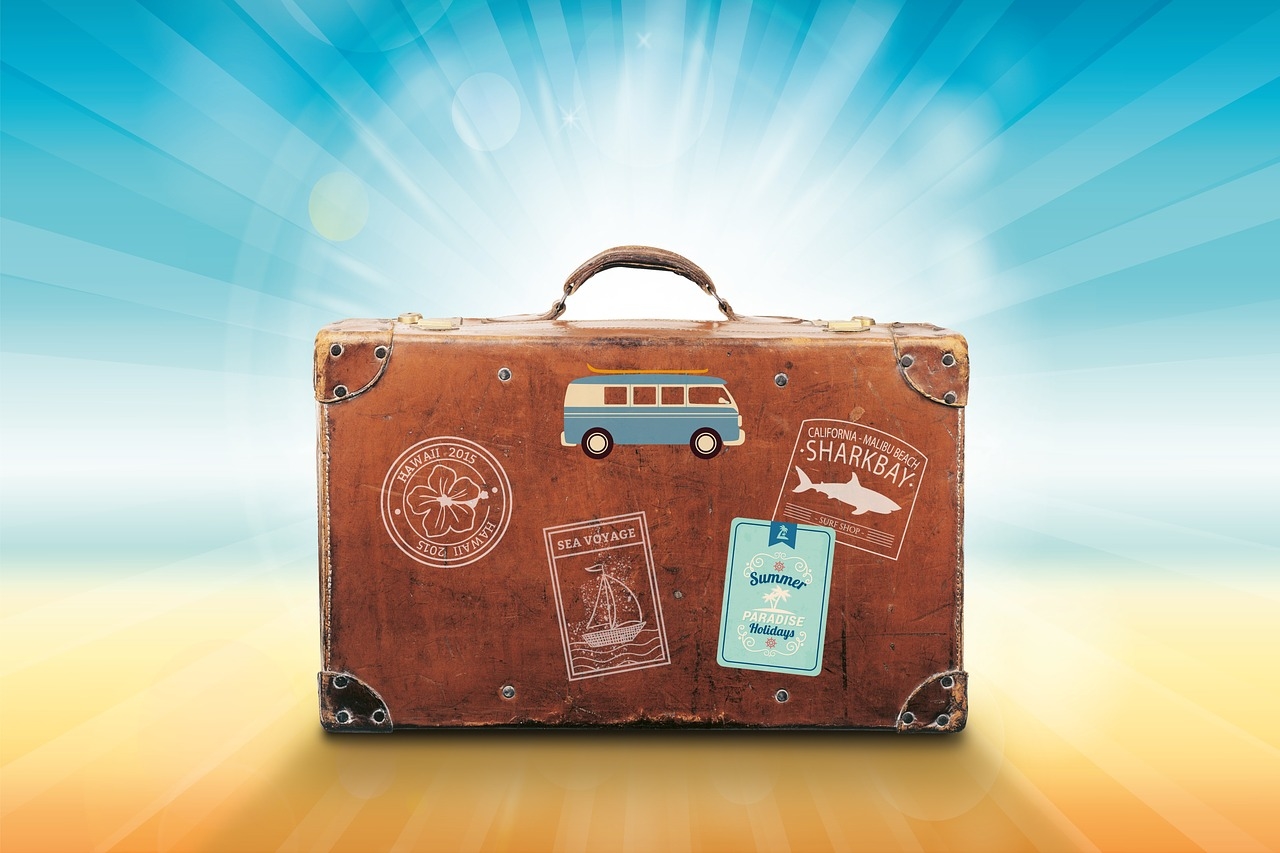



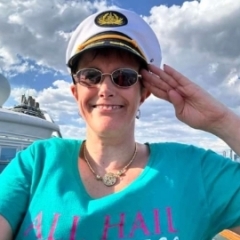


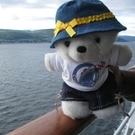

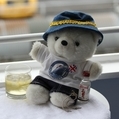
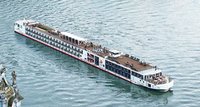


0 Comments
Recommended Comments
There are no comments to display.